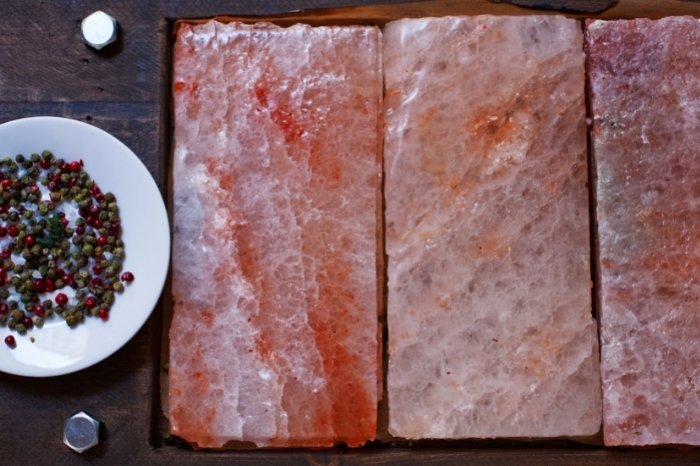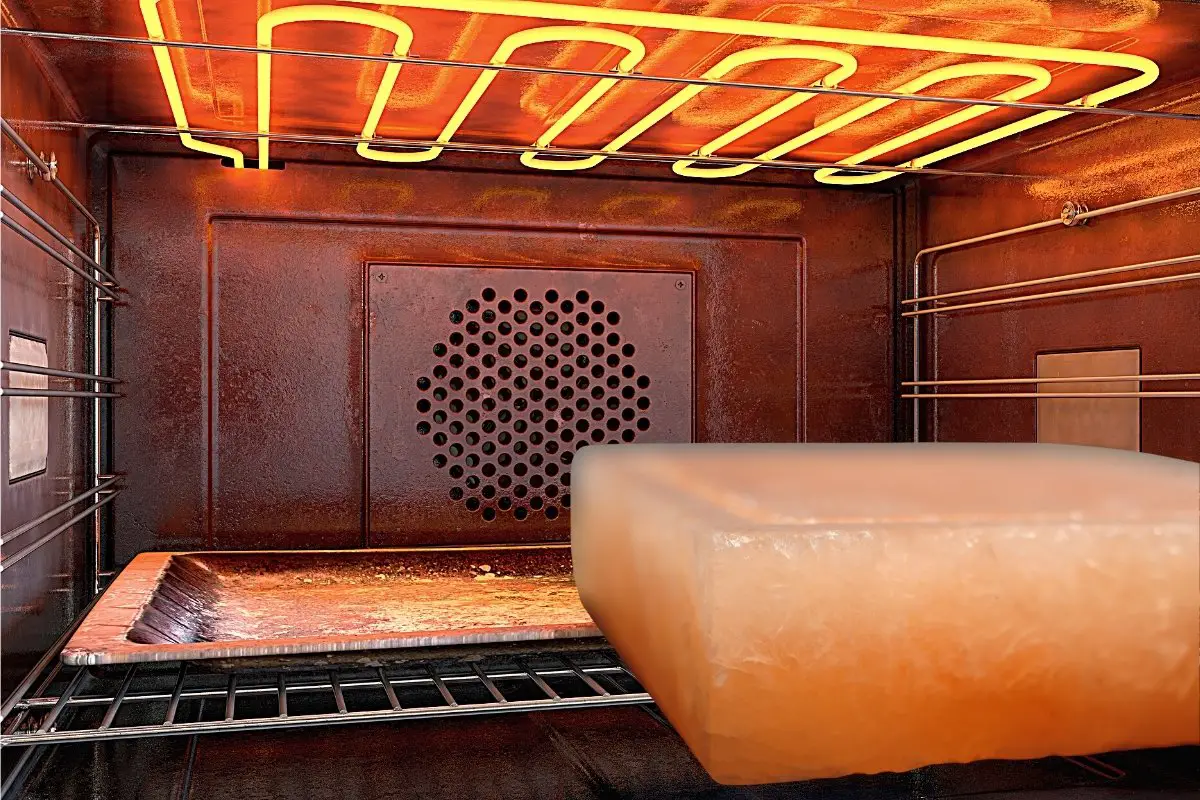Last Updated on October 18, 2024
Using a salt block for cooking could be a creative way to add flavor to your meals. And as you already know, salts are a common seasoning required for proper meal preparation. Heating salt blocks in the oven would be the easiest way to work around your salt block. But to get the right taste and satisfaction from your cooking, you want to ensure that you do it right.
Cooking with ordinary salt is not the same as when you have the meal laid upon, say, a Himalayan salt block. First, you get to customize your cooking to suit the occasion. Want to plan a get-together, barbecue, or want to do something different this season? Salt blocks could very well be a welcome introduction. But first, you want to know what they are and how best to use them. You can find out more about that in the sections that follow.
Table of Contents
What Is A Salt Block?
These types are different from the ones you apply to the skin to help with blocking out the heat from the sun. When we use this term in cooking, we are talking about the cookware that comes in the form of a brick, slab, or block. These blocks are made from natural salt, mainly of the Himalayan type. They could be a creative and exciting way to take your meal preparation to the next level.

These blocks, which are obtained from high up the Himalayan mountains in the Pakistani region, are not only of the purest variety but can equally be safe for cooking. Moreover, they are free from chemical compounds and appear pink, giving you more edge in the culinary business. And if you operate a kitchen or restaurant, you indeed could find it helpful in your establishment.
How To Use Himalayan Salt Cooking Blocks?
Ordinarily, you will have to sprinkle your traditional salt into your cooking, which is not the wrong way to do your cooking. But what’s even more interesting is that you could spice things up quickly and efficiently by first heating your salt block in the oven. But before we get into the details of how to do this properly, let’s first talk about how to use salt blocks in preparing your meals.
Curing Food
Your fish, meat, and vegetables can be easily cured over a salt slab. And when done correctly, it could help with preserving the food for a long while. To get it done correctly, you want to use a fresh slab sitting in the refrigerator for a while. This allows a solidification that will enable the salt to cure into the dish slowly.
You will have to place your fish, meat, or veggie on the slab and observe how slowly the salting process occurs.
Salt Block Cooking: 70 Recipes for Grilling, Chilling, Searing, and Serving
Cooking Food
You will also find the block useful when it comes to doing some of your regular cooking. Ideally, wet and moist food would quickly lock in some of the seasonings from the block into the meal. On the other hand, dry meals like crackers may not get some salt inside them but would surely rub off on them. This means that you achieve deeper salting when you run your wet food on the block.
To get the best nutritional benefits from cooking with a salt block, you want to heat it to over 400 degrees Fahrenheit. You will have to leave in your meats and vegetables for long compared to soft foods like cheese.
Heating Salt Block In The Oven
You want to start by ensuring the block is dried of excess moisture before putting it inside the oven. When you put it in the oven with water in it, it could affect the dry time, thereby causing holes and cracks which could destroy the block. So you want to start by ensuring the surface is dry before getting it into the oven.
Ideally, you could use your cooking oven, gas burner, or electric stove to heat your salt blocks. But I find the use of a cooking oven to be easy and efficient. To do it right, you want to heat the oven to 250 degrees Fahrenheit. Then, when the oven temperature is 250 degrees, you should take it out and cool it for 30 minutes.
Afterward, put it back in the oven and set it to 450 degrees. This will allow the block to heat slowly and ensure that the salt is locked in. Once heated, you can now bring it down and keep it on a heat-proof surface.
Now you can begin your cooking. Place your meat, fish, vegetable, or cheese directly on the slab. You could apply olive oil on the surface to allow for easy customization of the salting process. Less oil on the slab will let for more salts to get into your meals. And more oils will result in a low salting process. You can easily adjust the food on the slab by moving it and turning it over to ensure it gets in everywhere.
Salt Rocks Cooking Final Note
It will take up to 30 minutes at a temperature of 450 degrees for your salts to leak into your meals. And you will have to leave the block out for a few hours to cool completely before storing it. So you want to ensure that you do an excellent job at maintaining your block to get them to last long.

Barbara is an environmental activist and sustainability advocate who loves living green and sustainable. She firmly believes in reducing her carbon footprint and has been making great strides towards achieving this goal. Barbara is a vegan and avid recycler and has been actively involved in community gardens and other green initiatives. She is passionate about spreading awareness about the importance of living in a sustainable and eco-friendly manner. Barbara is always looking for ways to make a difference in her community and beyond. She is a huge advocate for preserving nature and the planet for future generations.


